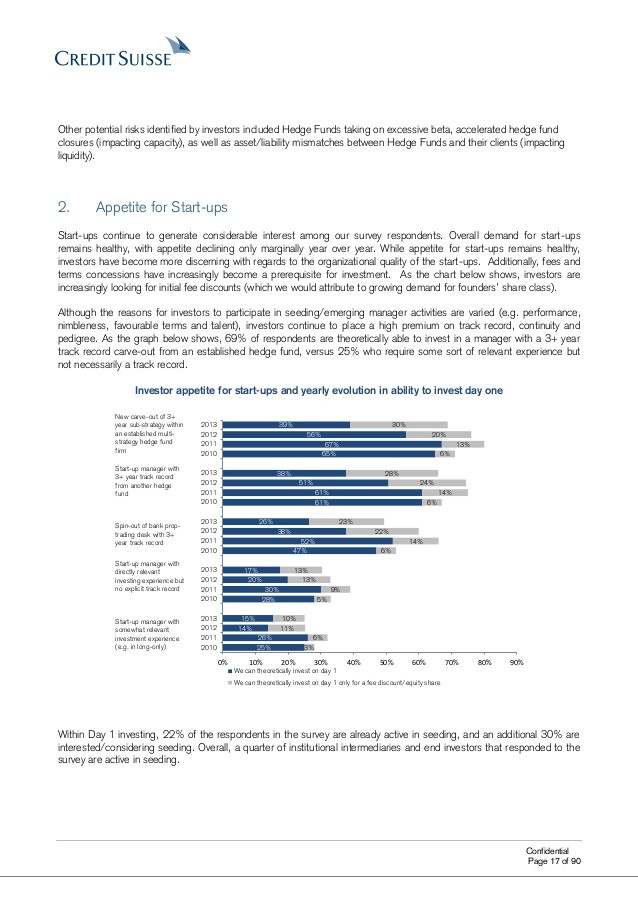The hybrid capacity The convergence between hedge funds and private equity firms
Post on: 4 Июнь, 2015 No Comment

Major hedge funds are investing in illiquid assets and some large cap private equity firms are investing in liquid assets. This new hybrid model of investing is rapidly converging the space between hedge fund and private equity investments.
by James Kelly, Partner
Miguel de Cervantes once said, It is the part of a wise man not to venture all his eggs in one basket.
Traditionally, hedge funds and private equity firms have been distinct: hedge funds created wealth primarily from publicly traded securities and private equity firms created wealth from private, illiquid equity investments. Now, however, some major hedge funds are investing in illiquid assets and some large cap private equity firms are investing in liquid assets. This new hybrid model of investing is rapidly converging the space between hedge fund and private equity investments.
Hybrid investing
Hybrid investing occurs when a fund invests in both liquid and illiquid assets. Hedge funds engage in hybrid investing through the use of side pockets. A side pocket is analogous to a traditional private equity fund, but it is run by a hedge funda discrete amount of capital is carved out of the hedge funds committed capital and is invested in illiquid private investments only. Side pocket investments contain transfer restrictions similar to private equity deals, but hedge fund managers of side pockets tend to be less involved in company management than are typical private equity managers. Conversely, private equity firms engage in hybrid investing by creating hedge fund arms.
Side pockets and private equity hedge fund arms are appealing to their managers because they allow the managers to use their experience in one market to take advantage of inefficiencies in the other. Furthermore, hybrid investing gives firms a broader base from which to generate returns, and thereby potentially increase profits and decrease risk. This possibility, in turn, has attracted investors who benefit from the added efficiency of being able to invest in both the private and public markets without the financial and administrative costs of dealing with a hedge fund and a private equity firm separately.
Mixing asset classes and investment strategies, while attractive, can create legal issues for both firms and investors. Liquid and illiquid asset classes have different rules regarding disclosure, reporting obligations, and taxation. For example, we have seen companies impose hedge fund-specific investor representations and warranties in stock purchase agreements for private equity investments for hedge funds, to the effect that the limited partners of the hedge fund investor do not have the power to compel it to divest the shares being purchased in the transaction.
Middle-market possibilities
In our view, hybrid funds will likely begin to play a bigger role in the middle market. As money continues to pour into private equity funds and hedge funds alike, these funds find themselves in bidding wars as competition for deals rapidly increases. Further, as the markets have become more efficient and the role of transactional intermediaries has increased, proprietary deals are becoming rarer and auctions commonplace. Aside from the obvious intangible currencies of operating focus and expertise, timing, and track record, the hybrid flexibility of a particular firm may add additional currency to the mix, allowing bidders to get creative to win bids, since valuation is not the only driver.

As we have seen, large hedge funds are already using side pockets to engage in middle-market buyout activity. These hedge funds (as hybrid funds in this capacity) are attractive to targets as they provide financing without usually demanding control of the target, in contrast to venture capitalists and private equity firms, which more often require significant minority holder protections or complete control. A hybrid fund can justify lower returns in an investment it views as conservative to diversify its main return-generating activities such as traditional hedge fund investments in public securities. This may make hybrid funds more competitive in auctions where they are bidding against traditional middle-market private equity firms that typically seek higher returns.
One possible outcome of this convergence is that as large hybrid funds infiltrate the middle market, middle-market hedge funds and midcap private equity firms could be pressured to employ hybrid strategies to remain competitive, especially if a particular investor base is not seeking a narrowly focused investment strategy in a particular fund. There is evidence that middle-market hedge funds have teamed up with large hedge funds to make joint bids for target companies. As this form of investor collaboration becomes more common, it may in turn cause some midcap private equity firms to invest outside of their traditional investments. For instance, investing in liquid securities might be a good waydepending on the situation and whether such fund is permitted to do so under its fund documentsfor midcap private equity firms to make a quick profit and, at the very least, decrease the risk of having all their investments in one asset type, while also retaining the ability to convert their investments into cash for equity in private transactions. Perhaps an argument can even be made that the smaller the private equity firm, the greater the need for this form of risk protection due to less risk tolerance, but so far, primarily large-cap private equity firms have used hybrid investing.
Conclusion
The convergence of hedge funds and private equity firms is likely the natural progression of more efficient markets, readily available equity capital, and increased competition. We believe that this convergence will continue to expand in the middle market.
The author thanks John Wildt, a law clerk during Summer 2007, for his significant contributions to this article.














